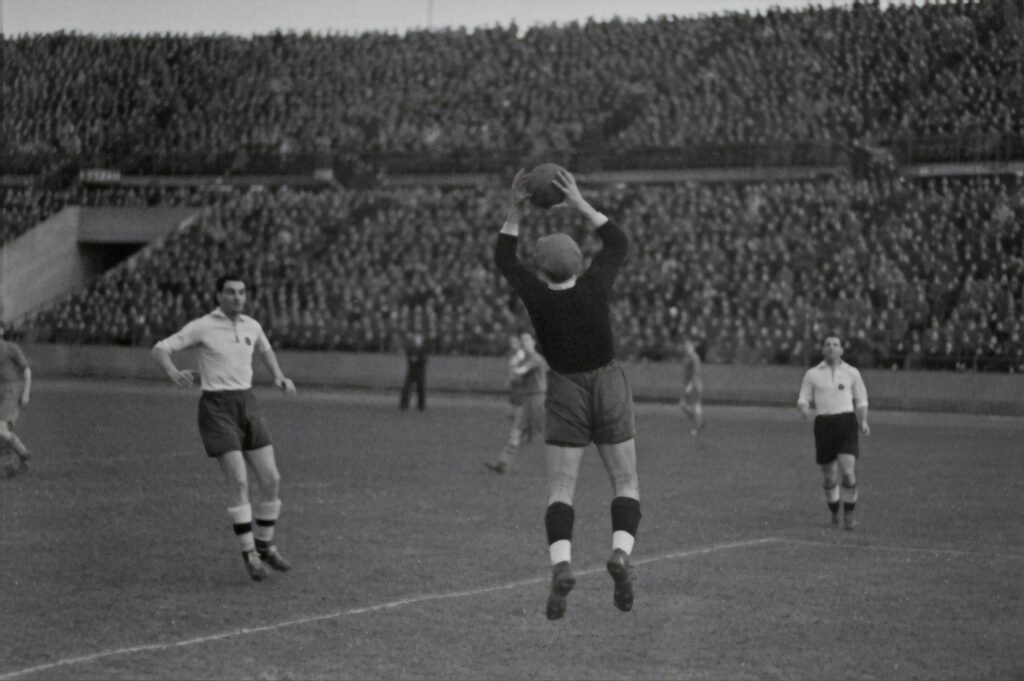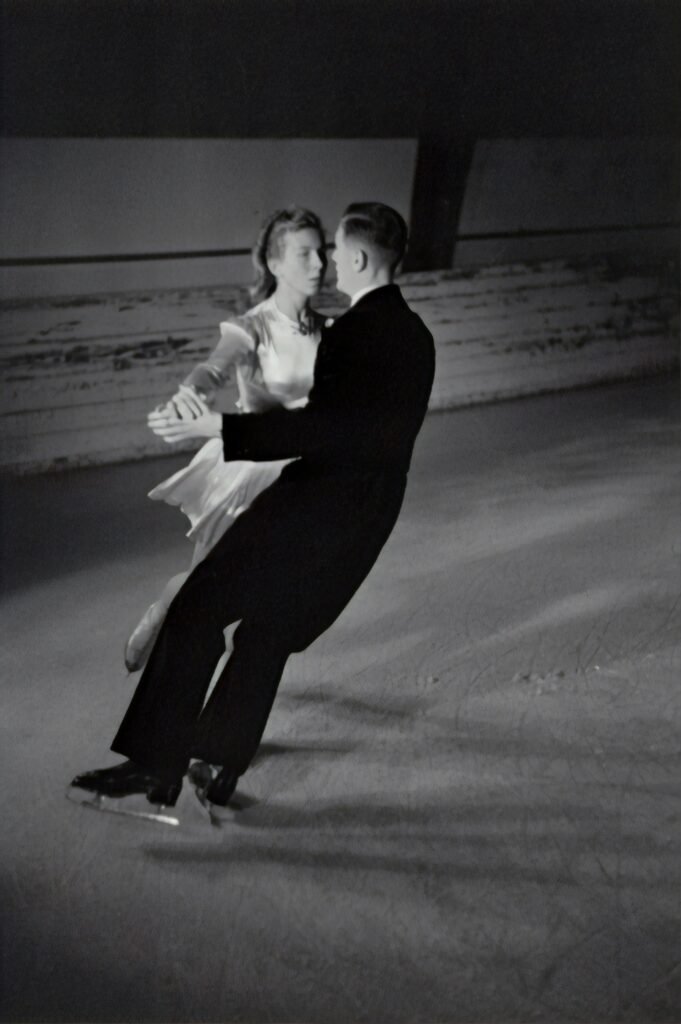In the fast-paced world of sports, you’re constantly striving for that extra edge. Whether you’re a professional athlete or a weekend warrior, finding ways to enhance your performance and protect yourself from injury is crucial. That’s where high socks come in. Often overlooked and dismissed as a mere fashion choice, high socks hold untapped potential when it comes to safeguarding your body during physical activities. From improved circulation to reduction in muscle strain, this article explores the untapped power of high socks and how they can elevate your game to new heights. So, lace up your shoes, pull on those high socks, and get ready to unlock a whole new level of performance.

This image is property of images.unsplash.com.
Importance of Socks in Sports
Sports are physically demanding activities that require athletes to push their bodies to their limits. In this pursuit of greatness, it becomes crucial to pay attention to even the smallest details that can contribute to overall performance and well-being. One such often-overlooked item of clothing that plays a significant role in sports is socks. Yes, you read that right – socks! While they may seem insignificant compared to high-tech athletic gear and equipment, the importance of socks in sports should not be underestimated. In fact, socks offer a range of benefits that directly impact an athlete’s performance and safety on the field or court.
Preventing Injuries
When engaging in sports, the last thing you want is an injury that could sideline you for weeks or even months. That’s where the humble sock comes into play as a preventative measure. One of the primary functions of socks is to provide cushioning and support to various areas of the foot, reducing the risk of common sports injuries. Socks act as a protective barrier between your feet and the hard ground, shielding them from the impact of high-intensity movements. By wearing the right pair of socks, you can significantly decrease the likelihood of sprained ankles, bruised heels, and other foot-related injuries.
Reducing Friction
If you’ve ever experienced the discomfort of blisters during sports activities, you know how distracting and painful they can be. Socks serve as a barrier between your skin and the shoes, minimizing the friction that can lead to blisters. The high-quality materials used in sports socks are carefully designed to reduce rubbing and chafing, ensuring a smooth and irritation-free experience. By eliminating the friction that occurs during repetitive motions, such as running or pivoting, socks help athletes focus on their performance without the distraction of painful blisters.
Enhancing Performance
Sports socks do more than just protect and support your feet – they can also enhance your performance on the field. By providing compression and stability, high socks can improve your overall agility and range of motion. The snug fit of high socks helps to stabilize your muscles and joints, reducing the risk of strain or fatigue. Additionally, some high-performance socks use moisture-wicking technology to keep your feet dry and comfortable, allowing you to perform at your best without the distraction of sweaty or uncomfortable feet.
Understanding High Socks
Now that we’ve established how important socks are in sports, let’s delve into the world of high socks – their definition, purpose, length, fit, and the materials used to make them.
Definition and Purpose
High socks, as the name suggests, are socks that extend higher on the leg, usually reaching above the calf. They offer more coverage compared to traditional ankle socks, providing additional support and protection to the muscles and tendons of the lower leg. The purpose of wearing high socks varies among sports and individual athletes. Some wear them for practical reasons such as injury prevention, while others sport them as a fashion statement or to represent team spirit and unity.
Length and Fit
High socks come in various lengths, ranging from mid-calf to just below the knee. The ideal length depends on personal preference, sport requirements, and any specific benefits an athlete seeks from wearing high socks. When it comes to fit, it’s essential to find a pair of high socks that offer a snug yet comfortable fit. Socks that are too tight can restrict blood flow, while socks that are too loose may not provide the desired level of support.
Materials Used
The materials used in high socks play a vital role in determining their overall performance and functionality. Sports socks are typically made from a mix of synthetic fibers such as nylon, polyester, and spandex, as well as natural fibers like cotton or wool. These materials offer durability, breathability, moisture-wicking properties, and stretch, ensuring a comfortable and functional fit. The choice of material depends on the specific needs of the sport and the wearer’s personal preferences.

This image is property of images.unsplash.com.
Sports that Benefit from High Socks
While high socks can be worn in a variety of sports, there are several sports in which their benefits are particularly noteworthy. Let’s explore some of these sports where high socks offer advantages to athletes.
Football
Football players often wear high socks to protect their shins during intense and physical encounters on the field. The additional coverage provided by high socks helps prevent scrapes, bruises, and friction burns that result from contact with opponents or the ground. Additionally, high socks can help hold shin guards in place, ensuring optimal protection.
Baseball
In baseball, high socks are a staple part of the uniform for many players. They not only offer protection but also serve as a fashion statement. High socks provide support to the calf muscles and reduce the risk of muscle strains during explosive movements such as sprinting or sliding. They can also help keep the legs warm during cooler weather.
Soccer
Soccer, a sport known for its fast-paced movements and sudden changes in direction, greatly benefits from high socks. By wearing high socks, players can protect themselves from hard tackles, scratches, and turf burns. The additional coverage also helps keep shin guards in place, offering an extra layer of protection during intense matches.
Field Hockey
In field hockey, high socks are a crucial part of the uniform. As the game involves intense running and frequent contact with the ball and opponents’ sticks, high socks offer protection to the shins, preventing injuries and minimizing the risk of bruises or lacerations. They are often paired with shin guards to provide maximum coverage and support.
Rugby
Rugby is a physically demanding sport that requires players to engage in intense tackles and physical battles. High socks play an important role in protecting the players’ legs from scratches, abrasions, and potential injuries from contact with opponents’ cleats or equipment. The additional coverage also helps keep the legs warm during outdoor matches in colder weather conditions.
Injury Prevention
One of the primary reasons athletes wear high socks is their ability to prevent injuries. Let’s explore some specific ways in which high socks contribute to injury prevention.
Ankle Support
Ankles are particularly susceptible to sprains and strains during sports activities. High socks provide an added layer of support to the ankle joint, minimizing the risk of rolling or twisting during sudden movements or changes in direction. By stabilizing the ankle, high socks help athletes maintain balance, reducing the likelihood of injury.
Protection from Abrasions
High-intensity sports often involve contact with hard surfaces or opponents, leading to potential abrasions, scrapes, or cuts. High socks act as a protective barrier, shielding the legs from these external forces. They provide an extra layer of defense against accidents or collisions on the field, reducing the severity of injuries and allowing athletes to continue performing at their best.
Preventing Muscle Cramps
Muscle cramps can be debilitating and can significantly impact an athlete’s performance. High socks, through their compression properties, offer support to the calf muscles, reducing the risk of cramping during vigorous physical activities. The gentle pressure exerted by high socks helps improve blood circulation and oxygen flow, minimizing the chances of muscle fatigue or cramps.

This image is property of images.unsplash.com.
Improved Blood Circulation
High socks offer more than just protective qualities. They also contribute to enhanced blood circulation, leading to improved overall performance. Let’s explore how high socks achieve this.
Compression Technology
One of the key features of high socks is their compression technology. This compression helps stimulate blood flow by applying pressure to the lower leg, ankle, and calf muscles. By gently squeezing the muscles and blood vessels, high socks promote efficient circulation, allowing oxygen and nutrients to reach the muscles more effectively. This improved blood flow can result in reduced muscle fatigue and enhanced performance.
Increased Oxygen Delivery
During sports activities, muscles require a constant supply of oxygen for optimal performance. High socks aid in the delivery of oxygen to the muscles by promoting blood circulation. By improving oxygen delivery, high socks help delay the onset of fatigue and can contribute to increased endurance.
Reduced Muscle Fatigue
Muscle fatigue can hinder an athlete’s performance, leading to decreased power output and slower recovery times. High socks, with their compression technology, reduce the build-up of lactic acid in the muscles, a byproduct of intense exercise that contributes to muscle fatigue. By minimizing muscle vibration, high socks help athletes maintain their energy levels and perform at their best for longer periods.
Enhancing Performance
Beyond injury prevention and improved blood circulation, high socks have the potential to enhance an athlete’s overall performance. Let’s explore the specific ways in which high socks can positively impact performance.
Reduced Muscle Vibration
High socks with compression technology help minimize muscle vibration during intense physical activities. By providing support to the muscles and reducing microscopic damage caused by vibration, high socks can enhance muscle efficiency and power output. This reduction in muscle vibration allows athletes to generate more force while performing explosive movements such as jumping, sprinting, or pivoting.
Improved Balance
Maintaining proper balance is crucial in sports, especially during quick changes in direction or when navigating uneven terrain. High socks help stabilize the muscles and joints in the lower leg and ankle, enhancing an athlete’s balance and agility. By providing a secure and supportive fit, high socks assist in maintaining optimal body alignment, reducing the risk of falls or stumbles.
Increased Grip and Control
High socks not only provide benefits from the calf down but also offer advantages in the shoe. The snug fit of high socks helps reduce movement within the shoe, preventing slippage and blisters. This increased control and stability allow athletes to make precise movements, ensuring maximum power and accuracy in their performance.
Reducing the Risk of Blisters
Blisters can be both painful and disruptive to an athlete’s performance. High socks play a critical role in reducing the risk of blisters by addressing factors such as moisture, friction, and cushioning.
Moisture Wicking Fabrics
High-performance sports socks often utilize moisture-wicking fabrics that draw sweat away from the skin, keeping the feet dry and comfortable. By minimizing moisture accumulation, high socks reduce the chances of blisters caused by wet skin rubbing against shoes. This moisture management also prevents the growth of bacteria, reducing the risk of infections.
Seamless Construction
The seamless construction of high socks eliminates potential friction points that can lead to blisters. By minimizing seams and rough edges, high socks provide a smooth surface against the skin, reducing the likelihood of irritation and blisters during sports activities.
Proper Fit and Cushioning
High socks that offer a proper fit and cushioning in key areas help reduce the pressure and friction that contribute to blisters. The padding in high socks not only enhances overall comfort but also acts as a shock absorber during high-impact movements. This cushioning helps prevent excessive rubbing and pressure, minimizing the risk of blisters forming.
Temperature Regulation
Maintaining the right temperature is essential for athletes, as overheating or chilliness can negatively impact performance. High socks contribute to temperature regulation through thermal insulation, moisture management, and breathability.
Thermal Insulation
In colder climates or during winter sports, high socks can provide additional warmth and insulation. The higher length of the socks helps keep the legs covered, preventing heat loss from the extremities. This thermal insulation helps athletes maintain body heat, allowing the muscles to function optimally and reducing the risk of injuries related to cold muscles.
Moisture Management
Sweat is inevitable during sports activities, and excessive moisture can lead to discomfort and even blisters. High socks with moisture-wicking properties draw sweat away from the skin, keeping the feet dry and comfortable. By effectively managing moisture, high socks help regulate temperature, preventing the feet from becoming too hot or too cold.
Breathability
The breathability of high socks ensures proper airflow, allowing heat to escape and fresh air to enter. This ventilation helps regulate body temperature, preventing overheating and discomfort. By maintaining a cool and dry environment inside the shoes, high socks contribute to overall foot comfort and performance.
Style and Team Unity
While functional benefits are crucial, the role of high socks in sports extends beyond performance. High socks also contribute to team unity, pride, and individual style within the sports community.
Customization Options
High socks offer athletes the opportunity to showcase their personal style and personality. Many companies provide customization options, allowing athletes to design socks that feature their team colors, logos, or even their names. This customization not only adds a touch of individuality but also fosters team spirit and unity.
Uniform Appearance
Wearing uniform high socks creates a sense of cohesion among teammates and gives the team a professional and put-together appearance. This visual unity can boost team morale and create a positive mindset, ultimately contributing to better performance on the field.
Team Identity and Pride
By donning the same high socks as their teammates, athletes create a bond and a shared sense of identity. High socks can be a symbol of pride and loyalty to one’s team, strengthening the connection among athletes and fostering a sense of camaraderie. This team identity helps ensure that athletes work together toward a common goal, striving for success collectively.
Choosing the Right High Socks
Now that we understand the importance of high socks and their various benefits, it is essential to know how to choose the right pair for your needs. Consider the following factors when selecting high socks for sports:
Consideration of Sport
Different sports have different sock requirements. Consider the specific demands of your sport and choose high socks that offer the necessary support, protection, and functionality. For example, if you participate in a contact sport like rugby, opt for high socks with extra padding and durability.
Proper Sock Length
The length of your high socks should be based on personal preference, sport regulations, and the level of coverage and support you desire. Take into account factors such as climate, uniform requirements, and your specific needs when determining the appropriate sock length.
Quality and Durability
Investing in high-quality socks is crucial to ensure their longevity and performance. Look for socks made from durable materials that can withstand the demands of sports activities. Reinforced stitching, strong elastic, and high-quality fabric blend are all indicators of durability and long-lasting wear.
Personal Comfort
Ultimately, your comfort is of utmost importance when choosing high socks. Pay attention to factors such as fit, cushioning, and moisture-wicking properties to ensure maximum comfort throughout your sporting activities. Experiment with different brands and styles to find the perfect pair that suits your preferences and needs.
In conclusion, the importance of socks in sports cannot be overstated. High socks, in particular, offer an array of benefits that go beyond mere fashion or personal style. They provide crucial support and protection, enhance performance, regulate temperature, and contribute to team unity and pride. By considering the specific demands of your sport and choosing high socks that meet your individual needs, you can unleash the power of high socks and unlock your true potential on the field or court. So, embrace the socks, and let them take your sporting experience to new heights!
